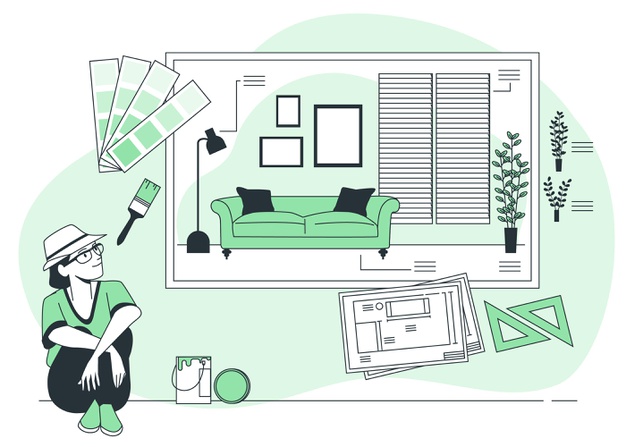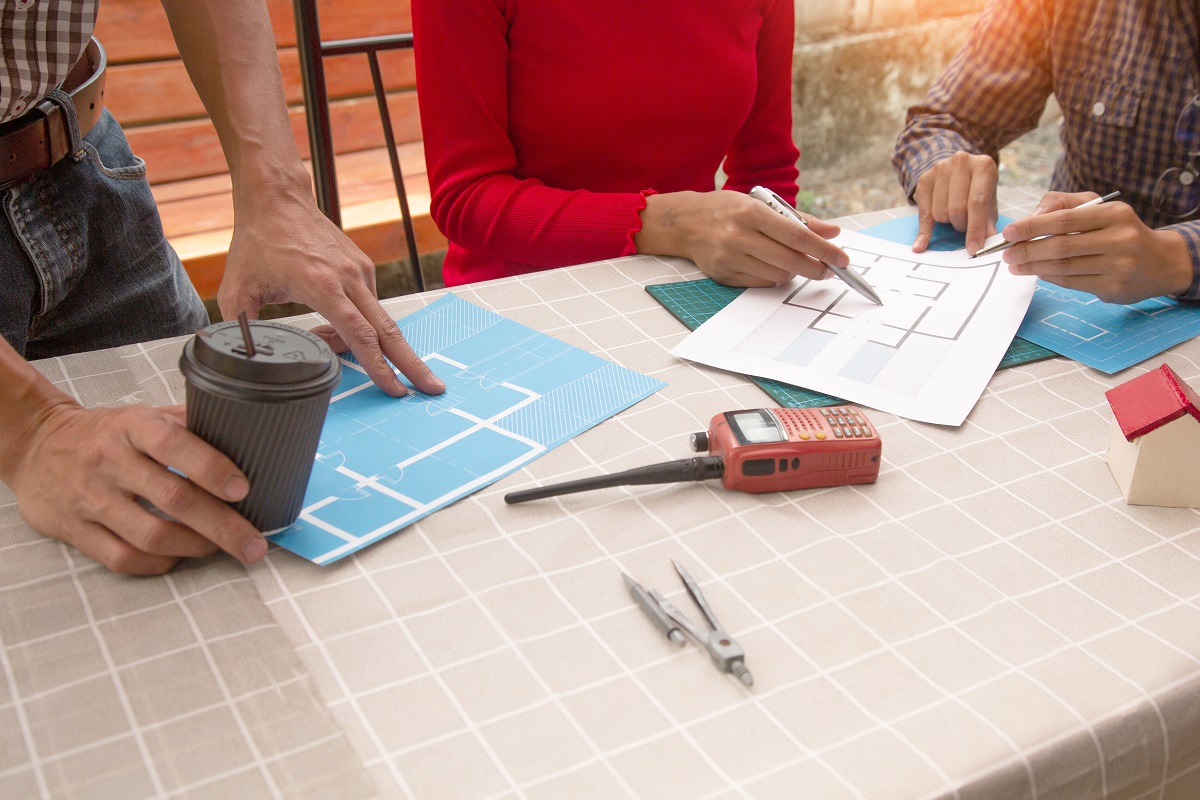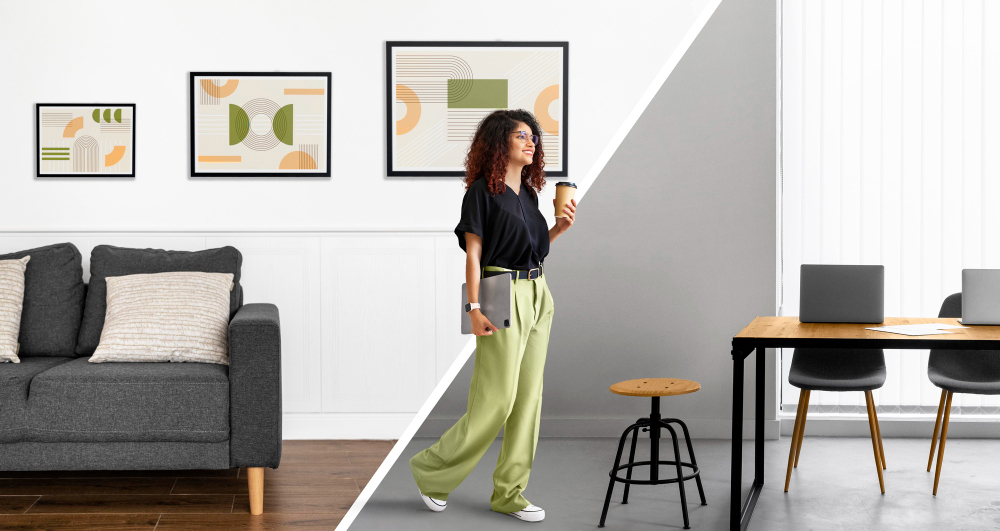From DIY to Degree: How to Learn Interior Design Professionally
Do you know interior design is one of the trending professional fields today? According to a report, its value is expected to reach INR 5,890 billion by 2033 from 2025 with a growth rate of 8.50%. This exorbitant rate has led emerging professionals to shift their careers to the trending field of interior design.
However, the problem that arises is how you can pursue this career through an Interior Design Course, what challenges you might face, and what are the ways to remain competitive in this corporate-driven era?
In this blog, we’ll decode those answers and help you navigate the best use of this interior design field.
Benefits of Pursuing an Interior Design Course
Interior Design Courses have so much to offer for the deserving candidates. Here is the list of the benefits of enrolling in these academic programs:
Do you want free career counseling?
Ignite Your Ambitions- Seize the Opportunity for a Free Career Counseling Session.
- 30+ Years in Education
- 250+ Faculties
- 30K+ Alumni Network
- 10th in World Ranking
- 1000+ Celebrity
- 120+ Countries Students Enrolled
1. High Salaries: Interior designers are typically paid more than other professions. The reason is that their work demands both technical and innovative prowess. By bringing their innovation into use, they can enhance the aesthetic and maximize the functionality of the space.
2. Online Option: Many renowned institutes offer courses through online mediums. This helps students to learn at their own comfort without the boundation of sitting in a classroom setting. Moreover, with the digitization in place, students can gain multi-directional insights, which may not be possible through offline mode.
3. Flexibility: Every student has a different level of conceptual understanding. Interior Design Courses help you to gain that flexibility, where students can pursue courses through the recorded sessions at their own pace.
Book Now →
Read Also: 7 Creative Careers That Are Exploding Right Now
4. User-Friendly Tools: Interior design tools are beginner-friendly. With just a basic understanding, you can handle these tools to streamline your functional operations.
Top Interior Design Courses in India
Before proceeding to the core, it’s important to be familiar with the top Interior Design Courses in India. These courses range from certification to post-graduate programs that cater to all study groups. Here are those courses listed:
Do you want free career counseling?
Ignite Your Ambitions- Seize the Opportunity for a Free Career Counseling Session.1. B. Des in Interior Design
Overview: A one-year program focusing on the fundamentals of interior design, including space planning and color theory.
Eligibility: Completion of 10+2 from any recognized board.
Career Paths: Interior Designer, Assistant Designer, Visual Merchandiser
2. B.Sc in Interior Design
Overview: A three-year undergraduate degree offering in-depth knowledge of interior design principles, CAD software, and sustainable design practices.
Eligibility: Completion of 10+2 from any recognized board.
Career Paths: Interior Designer, Space Planner, Furniture Designer
3. PG Diploma in Interior Design
Overview: A one-year postgraduate program aimed at enhancing design skills with advanced concepts and practical applications.
Eligibility: 10+2 completion from any recognized board.
Career Paths: Interior Designer, Spatial Planner, Exhibition & Retail Designer
4. M.Sc. in Interior Design
Overview: A two-year master’s program focusing on advanced interior design techniques and project management.
Eligibility: Bachelor’s degree completion in a relevant field.
Career Paths: Senior Interior Designer, Design Manager, Academic Researcher
Read Also: Digital Interior Design: The Future of Styling & Courses

Step-by-Step to Pursue an Interior Design Course
Interior Design Courses After 12th can be one of the finest experiences if pursued with the right approach. Here are the step-by-step ways to easily nail this professional journey:
1. Choose Your Path
Begin by deciding whether you prefer a more hands-on, technical approach or a design-focused path that prioritizes creativity and visual communication. It’s important to understand that every student has different preferences.
Some may choose a more practical approach, while others (with an aesthetic mindset) may prefer a design-focused path. Both play a key role in professional growth, and all Interior Design Courses include elements of both.
2. Education
Once you have chosen your preferred career path, select the course that aligns with your goals. For students who have completed 12th grade, a diploma and undergraduate courses are ideal. For graduates looking to enhance their portfolio or switch fields, the M.Sc. in Interior Design program could be an optimal choice.
If your goal is more technically focused, you can opt for the B.Sc. in Interior Design. In contrast, the B.Des in Interior Design is suitable for students aiming to build a career with a strong emphasis on design.
3. Gain Experience
Take part in internships and workshops during your Interior Design Courses. These platforms provide a real-time experience as you step into the professional world after completing the course.
It’s recommended to make the best use of this opportunity and jot down everything you learn. These internships and workshops offer an advantage over professional experience, as mentors can guide you whenever you get stuck.
4. Develop Skills
Skills are what differentiate one candidate from another, even if they have completed the same courses. These attributes can be developed by enrolling in Interior Design Courses and through real-world experiences. Examples include problem-solving, creativity, proficiency in design tools, collaboration, and communication.
Try working on group projects, participating in extracurricular activities, and practicing various design tools (AutoCAD, SketchUp, Adobe Photoshop, Revit, Canva, etc.) by installing them on your personal system.
5. Crack Interviews
Most Interior Design Courses offer placement opportunities for deserving candidates. These recruitment drives are typically held on campus and occasionally online, and they usually comprise two or three stages. The first stage is a written test, followed by a group discussion, personal interviews, and other evaluations.
Participate actively in the written test and aim to score as high as possible. It’s important to understand that these tests are largely practical, so revise the concepts and applications in a way that allows you to implement them effectively when needed.
Typical Questions Asked During an Interior Designer Interview
Irrespective of your skills and knowledge, clearing the personal interview round can be a bit tricky. However, through a strategic approach, you can nail this round smoothly. Here are the typical questions commonly asked during interior designer interviews and the tips to answer them:
1. Tell us about yourself and your background in interior design.
The question is typically asked to get a brief overview of your academic background and what additional Interior Design Courses After 12th you have pursued studies relevant to the field. Firstly, don’t be nervous, as it can be a stress-breaker to break into further conversation. Express yourself freely and what motivated you to pursue the Interior Design profession. However, make sure not to stay within a professional loop.
Read Also: Modern vs Contemporary Interior Design: What’s the Real Difference?
2. Walk us through your design process from concept to execution.
The question helps the interviewer to assess your broader topic knowledge and how you approach the topic. Here is the sample answer for better understanding:
“My design process begins with understanding the client’s needs, preferences, and lifestyle through in-depth discussions. I then move on to site analysis and concept development, where I brainstorm ideas and create mood boards. Next, I develop sketches and 2D/3D models using tools like AutoCAD and SketchUp. Once finalized, I prepare detailed plans and coordinate with vendors and contractors to ensure smooth execution, maintaining regular client updates throughout.”
3. Which design tools and software are you proficient in?
The question is typically asked to know which practical tools you use in your daily interior design tasks. Think of it as a chance to display your proficiency in these tools and their applications beyond the daily 9-to-5 job. Here’s a sample answer:
“I’m proficient in several industry-standard interior design tools. I leverage AutoCAD for precise floor plans, SketchUp for 3D modeling, and Adobe Photoshop for mood boards and presentations. I’m also comfortable working with Revit for BIM-based projects and Canva for quick visual layouts.“
4. How do you handle difficult or indecisive clients?
This question typically assesses your communication skills, patience, and ability to solve problems. It provides the interviewer with a glimpse of your overall approach to managing clients in diverse scenarios. Here’s the sample answer:
“I stay patient and carefully listen to understand their problems. I provide clear options with visuals and explain the pros and cons of each. This helps them make informed decisions. If they’re still unsure, I suggest starting with small steps to build confidence and trust in the process.“
5. Describe a time when a client was unhappy with your work and how you handled it.
The interviewer assesses your calmness and how well you tackle negative situations in the workplace with this question. To answer, it’s important to stay composed and visualize the situation as if it were happening in real life. Here’s a sample answer for better clarity:
“Once, one of my clients was unhappy with a color scheme I chose. I listened to their feedback calmly, acknowledged their concern, and explained the design rationale. Then, I quickly created alternative palettes and involved them in the selection process. This made them feel heard and valued, and we finalized a scheme they loved. The project ended successfully with improved trust.“
Read Also: Role of an Interior Designer: From Concept to Execution
Tips & Tricks to Enhance Your Selection Chances
Increasing your chances of selection goes beyond finding the right answers to the interview questions. There are various ways you can increase your chances of selection, as described below:
1. Prepare a Compelling Portfolio: A compelling portfolio makes you competitive in the challenging job ecosystem. Bring your best work forward in your resume. Since the employer has only a few seconds or minutes to decide whether to continue with your application, you must ensure that these works are visible right away when the employer opens it.
2. Research the Company and Role: Before the day of the interview, research the company, what the company entails, and its past achievements. Refer to the official website’s “About Us” section and go through its values, goals, and history. Go through its social media pages and check about the company on search engines.
3. Dress Professionally and Be Confident: Professional dressing is one of the most underrated aspects that many candidates neglect. When you enter the interview room, the first thing that catches the interviewer’s immediate attention is your personality and dressing sense. How well you have tucked in the shirt and fit, aligning with your physique.
Read Also: Interior Design vs. Civil Engineering: Which Career is Right for You?
4. Follow-Up After the Interview: Following up post-interview is not a major step, yet it provides an impression to the interviewer that you are genuinely interested in getting a job, maximizing your chances of selection.
Conclusion
In conclusion, learning interior design by enrolling in an Interior Design Course is not rocket science. It requires a step-by-step approach and how you tackle challenging situations in your career progression journey. Additionally, the interview forms the most critical aspect that offers you a chance to step up the competitive ladder. Ready to kickstart your interior design career? Join our esteemed Interior Design Course in Delhi with AAFT, your own academic partner! We have a reputation with esteemed professionals on our staff list, ranging from Sunita Kohli to Shivani Dogra. You can be the next!

AAFT has been providing the world with limitless creativity and expression since 1993! Through a dynamic and industry-driven curriculum, AAFT provides engaging and captivating articles to persuasive blogs and empowers its readers to explore diverse avenues of creative media education-related content.






